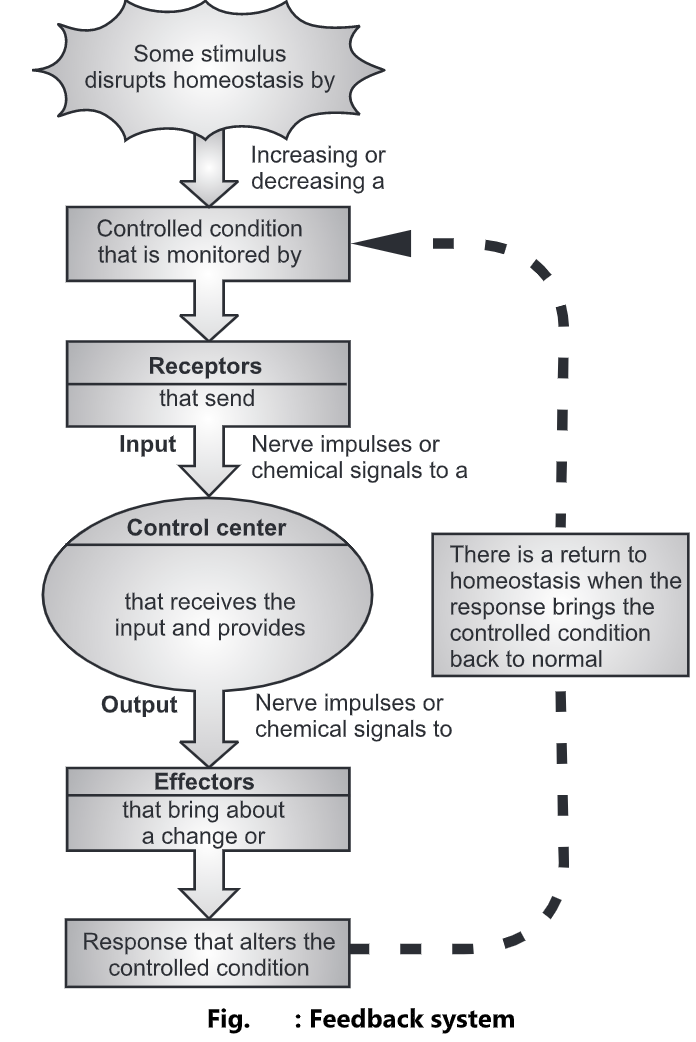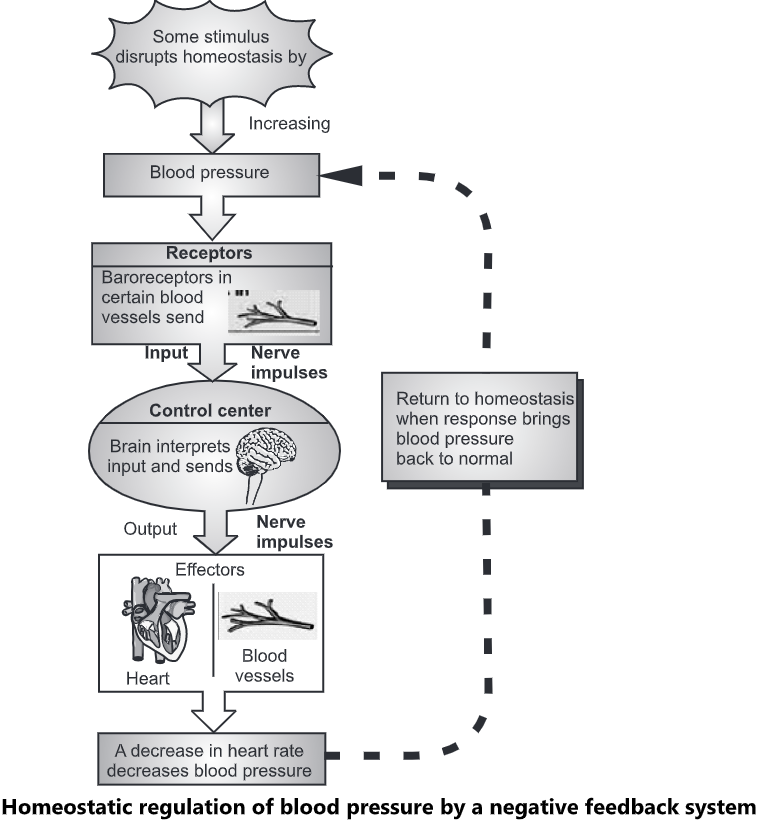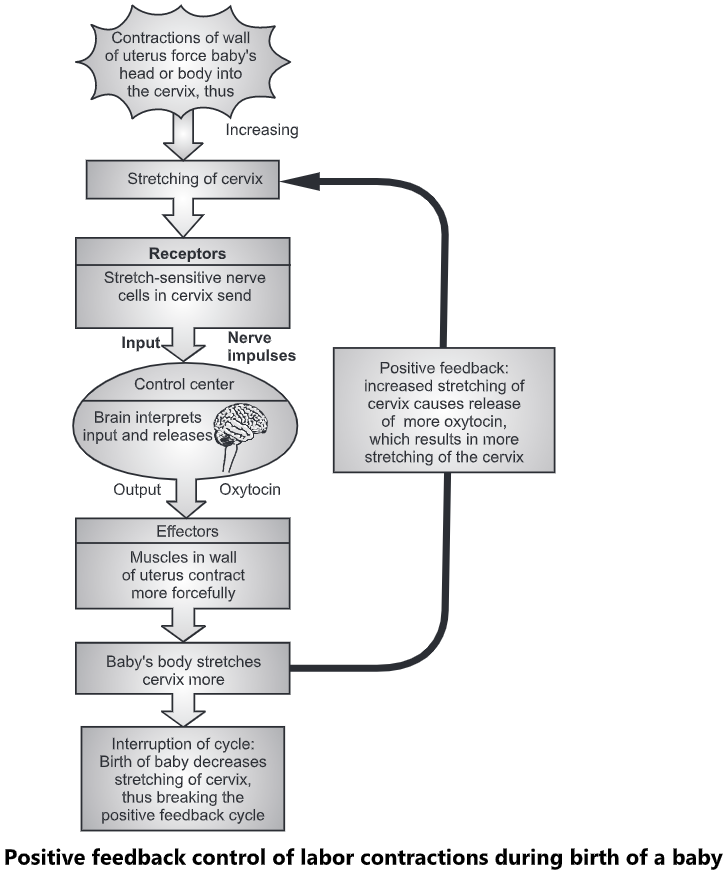Definition
- A feedback mechanism is a cycle of events in which the status of a body condition is monitored, evaluated, changed, re-monitored, re-evaluated, and so on.
- Each monitored variable, such as body temperature, blood pressure, or blood glucose level, is termed a controlled condition.
- Any disruption that changes a controlled condition is called a stimulus.
- A feedback system includes three basic components;
- A receptor
- A control center
- An effector
Receptor:
- A receptor is a body structure that monitors changes in a controlled condition and sends input to a control center.
- The input is present in the form of nerve impulses or chemical signals.
Control Center:
- A control center in the body, the brain sets the range of values within which a controlled condition should be maintained, evaluates the input it receives from receptors and generates output commands when needed.
- Output occurs in the form of nerve impulses, hormones, or other chemical signals.
Effector:
- An effector is a body structure that receives output from the control center and produces a response or effect that changes the controlled condition.
- Every organ or tissue in the body can behave as an effector.
- When body temperature drops sharply, the brain (control center) sends nerve impulses (output) to skeletal muscles (effectors). The response to such a stimulus is shivering, which generates heat and raises the body temperature.

Negative Feedback Systems:
- A negative feedback system reverses a change in a controlled condition. For example the regulation of blood pressure.
- Blood pressure (BP) is the force exerted by blood on the walls of blood vessels.
- When the heart beats faster or harder, the blood pressure increases.
- If some internal or external stimulus causes a rise in blood pressure, the following sequence of events occurs.
- Baroreceptors, pressure-sensitive nerve cells located in the walls of blood vessels, detect higher blood pressure.
- The baroreceptors send nerve impulses (input) to the brain (control center), which interprets the impulses and responds by sending nerve impulses (output) to the heart and blood vessels (the effectors).
- Heart rate decreases and blood vessels dilate (widen), which causes a decrease in BP (response).
- The activity of the effector causes BP to drop down called a negative feedback system.

Positive Feedback Systems:
- A positive feedback system tends to strengthen the change in the body’s controlled conditions.
- A positive feedback system operates similarly to a negative feedback system, except for the way the response affects the controlled condition.
- Consider the example of normal childbirth.
- The first contractions of labor (stimulus) push part of the fetus into the cervix, the lowest part of the uterus, open into the vagina.
- Stretch-sensitive nerve cells (receptors) monitor the amount of stretching of the cervix (controlled condition).
- As for stretching increases, they send more nerve impulses (input) to the brain (control center), which in turn releases the hormone oxytocin (output) into the blood.
- Oxytocin causes muscles in the wall of the uterus (effector) to contract more forcefully.
- The contractions push the fetus further down the uterus, which stretches the cervix even more.
- Then, stretching of the cervix ceases and oxytocin is no longer released.
Process of Blood Clotting:
- The positive feedback is initiated when injured tissue releases chemicals that activate platelets in the blood.
- An activated platelet releases chemicals to activate more platelets, causing a rapid cascade resulting in the formation of a blood clot.
Lactation:
- As the baby suckles on the nipple a response is sent to the spinal cord and up into the hypothalamus, which then stimulates the pituitary gland to produce more prolactin to produce more milk.
The Generation of Nerve Signals:
- In the generation of nerve impulses, the membrane of a nerve fiber allows the inflow of sodium ions through sodium channels, resulting in a change in the membrane potential which in turn causes more sodium channels to open.
- This change in the membrane potential is responsible for the generation of nerve signals.

You May Read: What are the components of blood?
